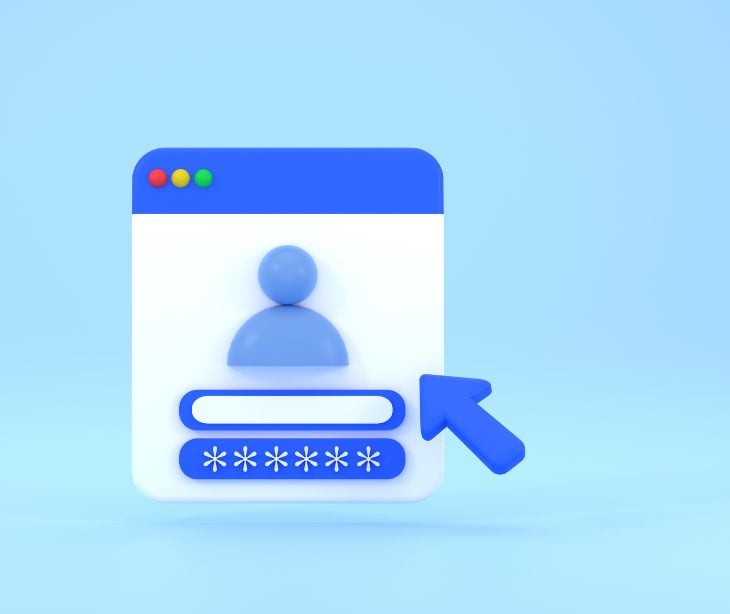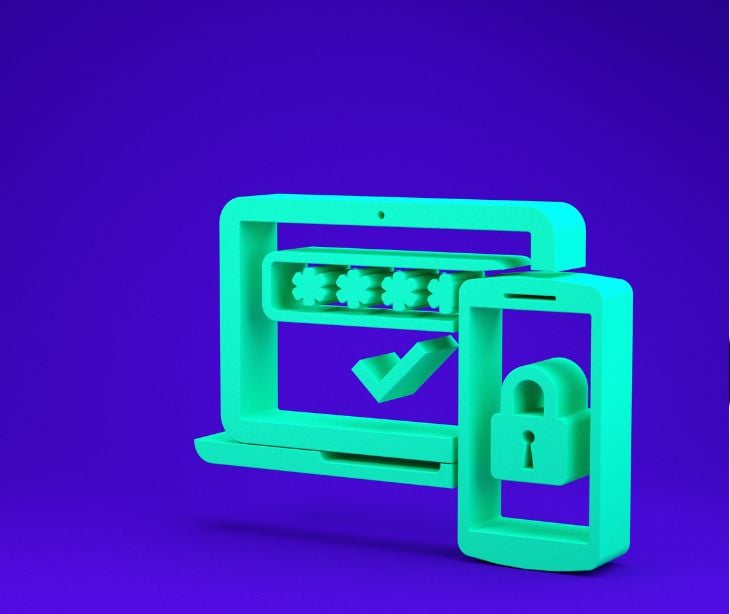
Frictionless authentication simplifies the authentication process by using advanced technologies and algorithms. It balances security and usability using factors like user behavior, device characteristics, and contextual information to establish trust and grant access to authorized users seamlessly.
The need for frictionless authentication
Traditional authentication methods, such as passwords and multi-factor authentication (MFA), often introduce friction in the user experience. Users are burdened with remembering complex passwords or going through additional verification steps, leading to frustration and potential security risks.
According to Auth0, “Frictionless authentication — an increasingly urgent priority as healthcare goes digital. Seamless authentication cultivates customer trust and can improve conversion rates since a user frustrated by a clunky login into your patient portal, mobile application, or website can result in poor user adoption or uptake.”
Frictionless authentication addresses these challenges by using advanced technologies to authenticate users seamlessly, providing a more user-friendly and secure experience.
Read also: What is MFA?
How frictionless authentication works
Frictionless authentication leverages various technologies and techniques to authenticate users without explicit credentials input. Let's look at some key components and methodologies behind frictionless authentication:
Behavioral biometrics
One of the core technologies used in frictionless authentication is behavioral biometrics. Behavioral biometrics analyze user behavior patterns, such as typing speed, mouse movements, and touchscreen interactions, to create unique user profiles.
Device recognition
Another aspect of frictionless authentication is device recognition. Every device has unique characteristics, such as its operating system, browser version, and hardware configuration. Frictionless authentication systems leverage these characteristics to create a digital fingerprint of the device.
The system can determine if the device is associated with the authorized user, enhancing security without requiring explicit user input.
Contextual awareness
Contextual awareness is a key factor in frictionless authentication. It considers the user's environment and context, such as their location, network, and time of access, being able to make informed decisions about granting access.
For example, if a user typically accesses an application from their office during working hours, accessing it from a different location or at an unusual time may trigger additional authentication checks. This contextual analysis adds an extra layer of security while minimizing user friction.
Machine learning and artificial intelligence
Machine learning (ML) and artificial intelligence (AI) algorithms are at the heart of frictionless authentication systems. These technologies continuously learn from user interactions and data to improve the accuracy of authentication decisions.
ML models can identify patterns and anomalies in user behavior, enabling the system to distinguish between legitimate users and potential threats. As these models evolve, frictionless authentication systems become more effective at accurately identifying authorized users and detecting suspicious activities.
Read also: What is risk-based authentication?
Benefits of frictionless authentication
Frictionless authentication offers numerous benefits for both users and organizations:
Enhanced user experience
One of the primary benefits of frictionless authentication is an enhanced user experience. Users can seamlessly access their accounts or applications by eliminating the need for explicit credentials, such as passwords or one-time codes. This reduces user friction, improves productivity, and enhances overall user satisfaction.
Improved security
Frictionless authentication can improve security by leveraging advanced technologies, such as behavioral biometrics and machine learning, to detect and prevent unauthorized access. Continuously analyzing user behavior and device characteristics identifies anomalies and potential threats, providing advanced security measures.
Reduced vulnerability
Traditional authentication methods, such as passwords, are susceptible to phishing attacks. Attackers can trick users into revealing their credentials through deceptive emails or websites. Frictionless authentication, on the other hand, reduces the reliance on explicit credentials, making it more difficult for attackers to deceive users.
Cost and operational efficiency
Implementing and managing traditional authentication methods, such as password resets and MFA tokens, can be costly and time-consuming for organizations. Frictionless authentication reduces the operational burden by automating the authentication process and eliminating the need for manual interventions.
Implementing frictionless authentication
Implementing frictionless authentication requires careful planning, consideration of user privacy, and integration with existing systems. Here are some key factors to consider when implementing frictionless authentication:
User education and communication
Users must understand how frictionless authentication works, its benefits, and any privacy considerations. Clear and concise communication through user guides, tutorials, and FAQs can help users embrace the new authentication approach.
Privacy and data protection
Frictionless authentication relies on collecting and analyzing user data, such as behavioral biometrics and device characteristics. Organizations must prioritize user privacy and ensure compliance with applicable data protection regulations. Implementing data protection measures, such as encryption and anonymization, can help build trust and mitigate privacy concerns.
Integration with existing systems
Frictionless authentication should seamlessly integrate with existing systems and workflows. Organizations need to assess their current authentication infrastructure and evaluate the compatibility of frictionless authentication solutions.
Continuous monitoring and adaptation
Frictionless authentication systems require continuous monitoring and adaptation to evolving threats and user behaviors. Regular analysis of authentication data, anomaly detection, and system updates are necessary to maintain the effectiveness and security of frictionless authentication solutions. Organizations should establish processes to monitor, audit, and improve their authentication systems over time.
Related: What is user authentication?
FAQs
Why is frictionless authentication beneficial for HIPAA compliance in healthcare settings?
Frictionless authentication is beneficial for HIPAA compliance because it enhances security without hindering the user experience. By simplifying the authentication process, healthcare organizations can reduce the likelihood of user errors that might lead to security breaches. This approach helps protect PHI from unauthorized access while ensuring that healthcare professionals can efficiently access the information they need to provide patient care.
What are the potential risks associated with frictionless authentication under HIPAA?
- Over-reliance on convenience: If not implemented correctly, frictionless authentication methods could compromise security by prioritizing ease of use over rigorous identity verification.
- Inadequate protection: Simplified authentication processes may leave systems vulnerable to unauthorized access if they lack sufficient security measures.
- Compliance gaps: If frictionless authentication does not meet HIPAA’s strict security requirements, it could result in non-compliance penalties, including fines and legal consequences.
- Privacy concerns: Biometric data used in frictionless authentication must be protected under HIPAA to prevent misuse or breaches of sensitive information.
How can healthcare facilities implement frictionless authentication to maintain HIPAA compliance?
- Using multi-factor authentication (MFA): Combining frictionless methods with MFA to enhance security while maintaining user convenience.
- Ensuring strong encryption: Protecting biometric data and other sensitive information used in authentication with strong encryption techniques.
- Conducting regular risk assessments: Evaluating the security of frictionless authentication methods to identify and address potential vulnerabilities.
- Monitoring access logs: Continuously tracking and auditing user access to PHI to detect any unauthorized attempts or suspicious activity.
- Training staff: Educating healthcare professionals on the proper use of frictionless authentication tools and the importance of maintaining security and privacy standards
Subscribe to Paubox Weekly
Every Friday we'll bring you the most important news from Paubox. Our aim is to make you smarter, faster.



